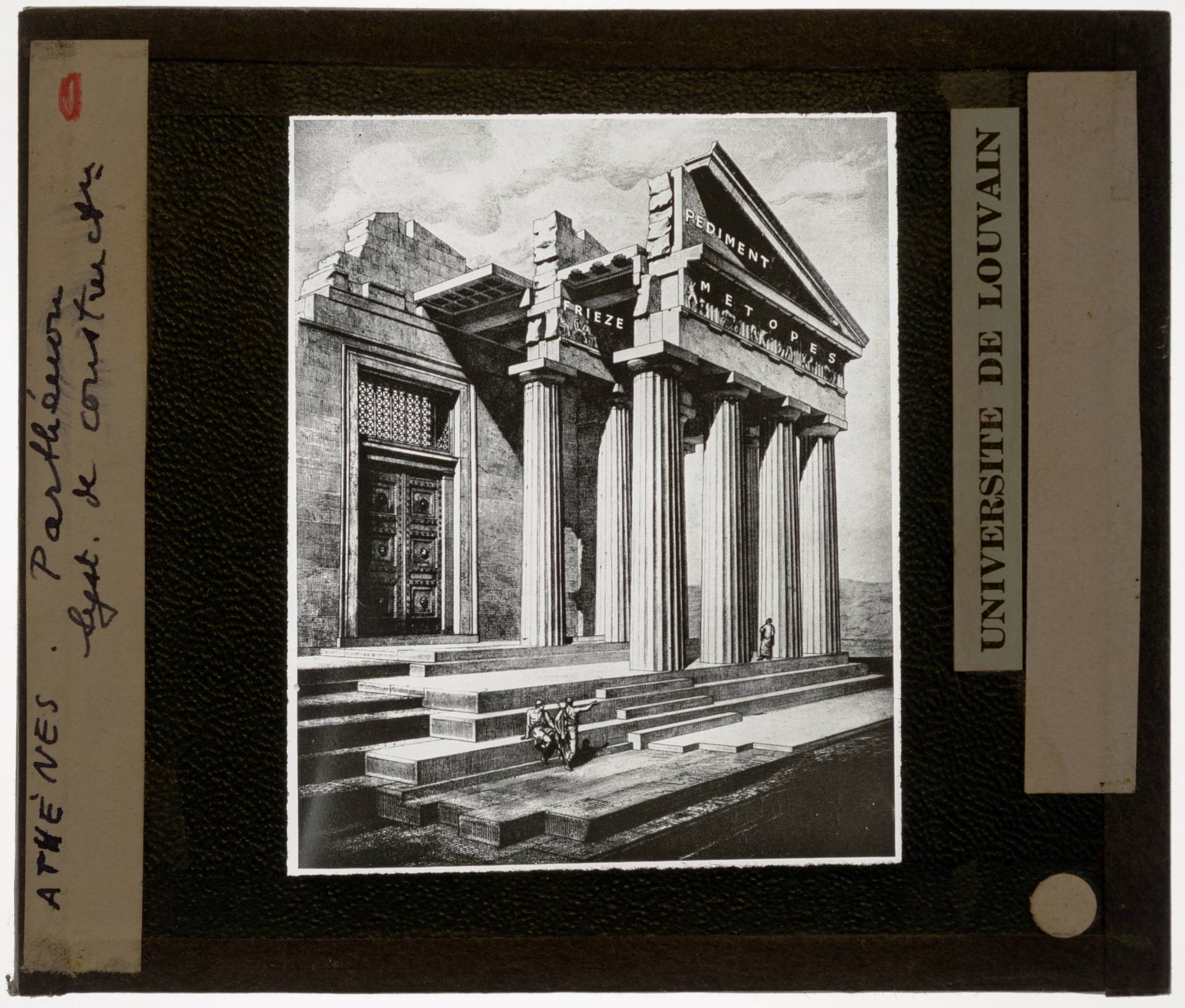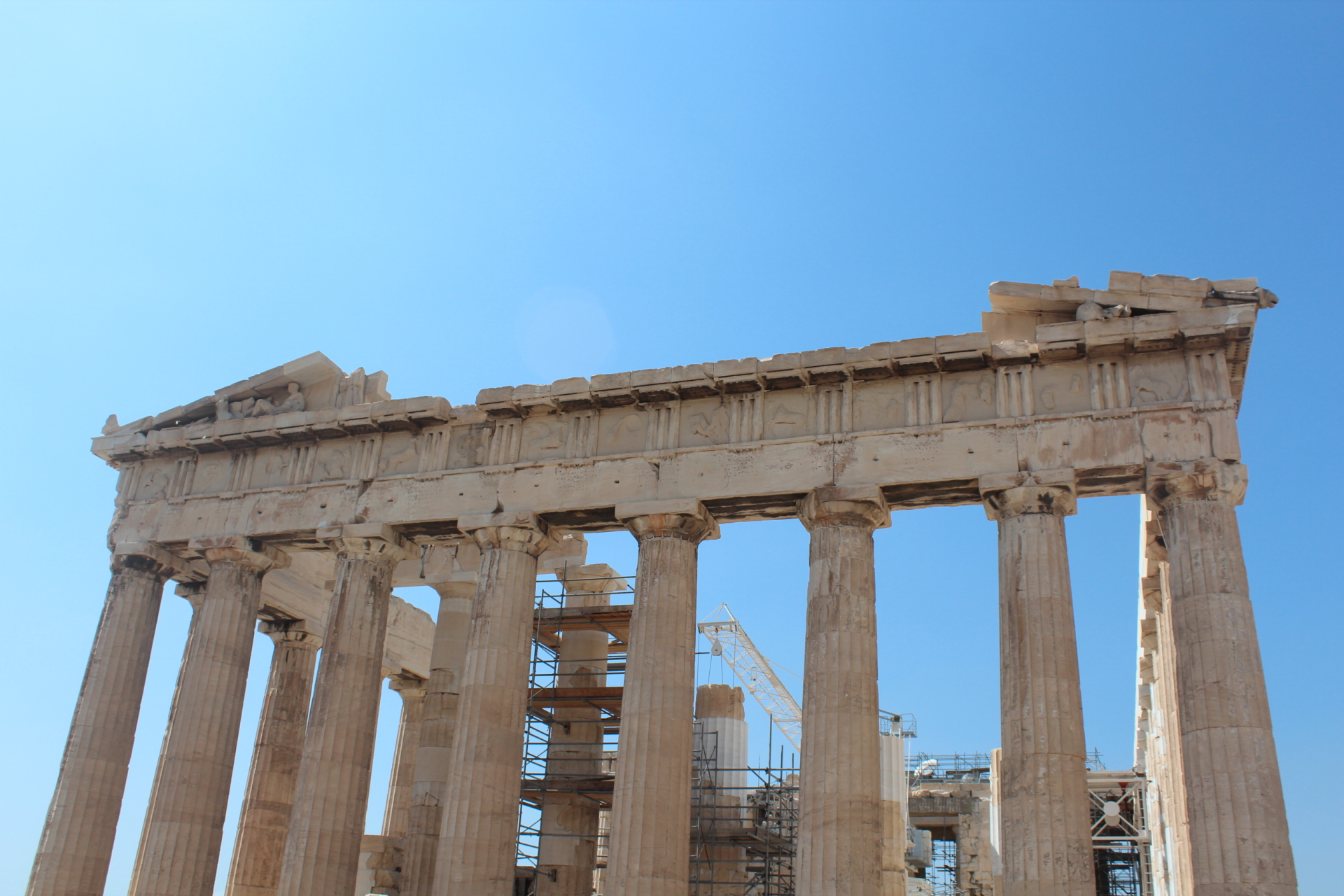




Pericles and the arts
The Parthenon was built during what is known as the Golden Age of Athens, under the rulership of Pericles, who rose to power at around 461 BCE. A skilled general and orator, Pericles led the city through the First Peloponnesian War and the start of the Second Peloponnesian War. He also greatly encouraged artists, writers, sculptors and philosophers during his time, thus making the city flourish — an example of which is the Parthenon. The architects responsible for the building were Ictinus and Callicrates, while the sculptures are thought to be the work of famous artist Phidias.

Bust of the Greek statesman Pericles (495–429 BCE).
No straight lines
The precision of the architects' work in the Parthenon is outstanding. It isn't a matter of perfectly right angles but, rather, of finely calculated, smooth curves. Our eyes naturally perform some distortions while seeing — were the Parthenon's columns all equal, for example, we would still probably see the outermost columns as thinner. To correct things like this, the architects made the corner columns just a little bit thicker than the others! The columns also bulge imperceptibly to the middle of the building, and all of them present a distortion called entasis, which means they are slightly thinner at their top and base. It is the combination of these small calculations that give the Parthenon its presence and poise.

Fragments of Parthenon sculptures. Public domain image made available by Europeana Collections.
Architecture and sculptures
The Parthenon's sculptures have had one of three possible fates: lost or destroyed; preserved in the Acropolis Museum; or looted by Lord Elgin and preserved in the British Museum. That's why it's so difficult to get the "full picture" of the Temple. The building seen in the Acropolis was, originally, heavily decorated with colorful sculptures. Below you can learn what each architectural element represented:
Metopes
Merriam-Webster definition: the space between two triglyphs of a Doric frieze often adorned with carved work
The metopes of the Parthenon showed scenes of wars and contests.
Frieze
Merriam-Webster definition: a sculptured or richly ornamented band (as on a building or piece of furniture)
The frieze of the Parthenon showed the Great Panatheia, an annual festival during which the Athenian citizens would march in a procession to the Acropolis. The frieze showed the citizens lined up, and the background was originally blue.
Pediments
Merriam-Webster definition: triangular space that forms the gable of a low-pitched roof and that is usually filled with relief sculpture in classical architecture
The east pediment showed the birth of Athena.
The west pediment showed the fight between Athena and Poseidon for the city of Attica. Athena won and named the city Athens afterwards.

Scheme showing the location of the metopes, the frieze and the pediment. Public domain image, made a...

